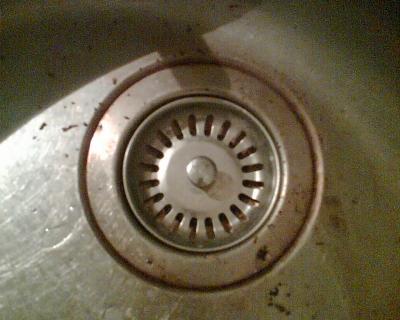kisss
photos...
http://www.elastic.org.uk/KISSS
May 2005
Private surveillance becomes public space in the artist Tracey Moberly's work titled '[Parallel Lives] viewed through a mobile phone'
(http://www.sanderswood.com/parallel_lives).
This has developed from a previous piece of work, a poem, carved into bricks titled 'We Breathe Each Other's Breath' the poem was originally commissioned by Brass Art for a publication titled STALK. Tracey has since developed each line of the poem into individual projects. The line of poetry related to the Parallel Lives project reads ... 'The biometric heiress collects, processes and stores'
Tracey is developing this section of her website as a public gallery space using her mobile phone camera as a surveillance tool. She works on particular themes, such as [everyday] which is a diary page consisting of two images per day that documents her personal and public environment; [graffiti] focusing on the street art and political graffiti statements she comes in contact with, and many other categories. For the exhibition at the Conical Gallery in Melbourne, Australia 28 October - 13 November 2005 the artist has selected new work she is developing in Parallel Lives entitled [plugholes]. An intimate surveillance on an object that everyone in the developed world will look at at least once a day. It is an object that unites us all at the same level. It also brings us together as a community, for those who live in a street, their plughole is the beginning of the pipe network that interconnects with many to lead into one vast system of sewage pipes that travel and interconnect below our feet, street meeting street across the towns and cities of the world.
Tracey has started her documentation beginning with many of the plugholes in the bathrooms and kitchens she has visited recently. The plugholes in this exhibition are a cross section and include those of multi-millionares, pensioners, rock stars, artists, students, vicars, health professionals, social workers, investment banks, leisure centres, clubs, bars, trains, restaurants and so on. She views the plughole as a personal and intimate object taken for granted and never studied rigoroursly despite being viewed many times throughout a day. The artist would like to encourage debate, writings and actions based around the fact and the metaphor of the [plughole].
This selection of work was prompted by the exhibition being held in Australia in the Southern Hemisphere and the photographs having been taken in the U.K. in the Northern Hemisphere, with the great debate of the water going down the plughole in opposite directions in the two different hemispheres. It was further prompted by world news issues of the cyclone or hurricane which are devastating areas of the U.S.A.
According to popular myth, in the Southern Hemisphere, all hurricanes spin clockwise - as does the water in toilet bowls, bath tubs and hand basins. The supposed force behind this phenomenon is the Coriolis Force, named after Gustave-Gaspard Coriolis who coined the term in 1835 referring to the "Conservation Of Angular Momentum". You can see angular momentum being conserved or saved with an ice skater spinning on one foot. When the skater pulls in their arms close to the centre, or spin axis of their body, they speed up and when they stretch out their arms, they slow down again. A hurricane (also known as a cyclone or typhoon) begins near the equator, it then moves in the direction of either the North Pole, or the South Pole. As it moves closer to one of the Poles, it also gets closer to the spin axis of the Earth, which runs through the North and South Poles. This is similar to the ice skater pulling their arms in closer to the spin axis of their body. The storm is moving in two directions at the same time - towards the Pole, and closer to the spin axis of the Earth. To balance the momentum equations, the storm spins clockwise in the Southern Hemisphere, and anti-clockwise in the Northern Hemisphere.
The Coriolis Force is zero at the Equator, and strongest at the North and South Poles. The infantry see the Coriolis Force in action in long-range guns. The operators in charge of fire-control of long-range guns have to apply different corrections to the left or right, depending on how far from the equator they are, and in which hemisphere they are. These situations involve large distances. A hurricane can span hundreds of kilometres, while a big gun could easily lob a shell 50 kilometres.
A toilet or hand basin is much smaller, on average approximately 30 cm across. The Coriolis Force on such a small body of water is about 10 million times smaller than the gravity force of the Earth pulling on the water in the toilet or hand basin. A small Coriolis Effect can be seen but only if you are extremely careful. The rotation effect is so small, that it is vastly overshadowed by the direction in which the water entered the toilet bowl or basin, or wind effects over the surface of the water. The experiment has been done in both hemispheres - in 1962 by Ascher H. Shapiro at MIT in Massachusetts, and in 1965 by Lloyd M.Trefethen at the University of Sydney.
This is a facet of the rich and inescapable culture of the plughole in which we all immersed. The artist invites you to contribute your experiences, opinions, stories and own mobile phone images on the fact and the metaphor of your [plughole] surveillance ... Please email surveillance to: plughole@foundry.tv
All contributions can be viewed in the 'Fact & Metaphor Of The [Plughole]' section of
http://www.sanderswood.com/parallel_lives/plugholes
